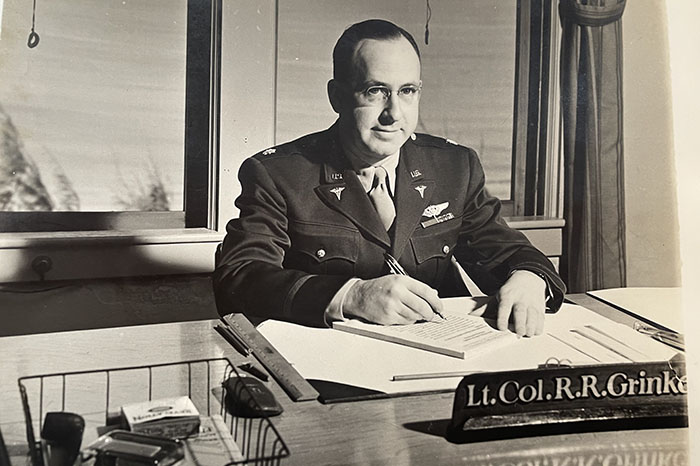During an undergraduate anthropology class, Roy Richard Grinker, professor of anthropology and international affairs, quoted statistics to help his students grasp the worldwide prevalence of mental health disorders.
More than 260 million people suffer from depression. Approximately one in 50 children in the United States are diagnosed with autism each year. And, at any particular time, 25 percent of Americans meet the scientific criteria for a mental illness—not to mention the tens of millions more who regularly suffer through waves of anxiety and sadness.
As Grinker checked off figure after figure, one student observed, “So, nobody’s normal.”
Not only had the student summarized the point of Grinker’s lecture—in mental health, differences aren’t always deficits—but she’d also given him the title of his next book. In his acclaimed Nobody's Normal: How Culture Created the Stigma of Mental Illness (W. W. Norton & Company, 2021), Grinker reveals how centuries of moral judgments have fueled stigma against people with mental illnesses.
Few scholars are better qualified to cast a discerning eye on the history of mental illness than Grinker. He was raised among three generations of eminent psychiatrists. His grandfather was one of Sigmund Freud’s last patients. And his books often draw on his personal history—from his daughter’s autism diagnosis to his travels among hunter-gatherers in central Africa to conversations with his students—for illustrations of shifting cultural perceptions.
In Nobody’s Normal—hailed by The New York Times for its “rich history woven with insights” and by NPR as “personal and empathetic”—Grinker acknowledges the challenges people with psychological conditions face, but he sees a light at the end of the tunnel. As old mental health prejudices are rejected and differences embraced, Grinker believes his student was right: “Normal is an illusion,” he said—and one that’s fading fast.
“We learned from our culture to put stigma and mental illness together,” he said. “And that means we can also learn to take it apart.”
Embracing Differences
Growing up the son of a psychiatrist in Chicago—and with his psychiatrist grandfather living across the street—Grinker said his family believed that everyone had a touch of mental illness. His grandfather (also named Roy Richard Grinker) regaled him with stories of working with Freud, from the legendary analyst’s stale-smelling Vienna waiting room to his wish that some psychiatric conditions would someday be no less stigmatized than the common cold. During World War II, Grinker’s grandfather conducted pioneering studies of American pilots suffering combat-related distress. “He said his patients were not abnormal, they were normal people in abnormal circumstances,” he recalled.

Grinker’s grandfather (also named Roy Richard Grinker) studied with Sigmund Freud and conducted pioneering research with World War II pilots.
Grinker’s family was disappointed that he didn’t pursue psychiatry. (His wife is a psychiatrist with the National Institute of Mental Health.) But as an anthropologist, he has become a leading voice in framing an understanding of cultural attitudes toward mental health. In his book, he traces the origins of mental illness stigma to the Industrial Revolution, when people were often confined to asylums less for psychological conditions than for being nonproductive workers. “Mental illness and stigma were born together of capitalism,” he said. “Capitalism defined ‘normal’ as someone who was autonomous and independent and produced the most capital. And we stigmatized those who produced the least.”
During his global field work, Grinker has observed how different societies embrace notions of mental illness. In Namibia, for example, he spoke with the father of a young boy who exhibited classic autism traits but was respected in his village for his goat herding skills. When Grinker asked the father if he was worried about who would care for his son after he was gone, the man gestured toward his neighbors and said, “We won’t all die at once.” Through the village’s social support network, “they fashioned a society that accepts differences that we shunned,” Grinker said.
Still, Grinker is hopeful that stigma is rapidly diminishing. He doesn’t minimize the barriers that remain. In a TED Talk, he noted that 60 percent of Americans with mental illness get no treatment, worse among minorities; suicide is still the third leading cause of death among teenagers; and anorexia mortality rates are as high as 10 percent. But he also sees signs that, as Freud and his grandfather both hoped, mental illness is increasingly accepted as a common part of human diversity. Today, for example, 12 percent of American public school children receive some form of special education, he notes, while 10 percent of Americans use antidepressants—as many as take cholesterol-lowering statins.
In his own life, Grinker’s daughter Isabel, 29, self-identifies as autistic, channeling her energy into caring for animals at a research lab. Grinker no longer hears the question he posed the Namibian father: How will she survive on her own? And in a recent class, one of Grinker’s students described her ADHD diagnosis as the highlight of her freshman year. “Finally,” she said, “somebody saw that I wasn’t lazy or stupid. I just needed a little bit of help.”
“Our ideals are changing,” Grinker said. “We value diversity more than sameness. We no longer worship the person who conforms to an illusion of normality. Normal is becoming whatever someone wants it to be.”


